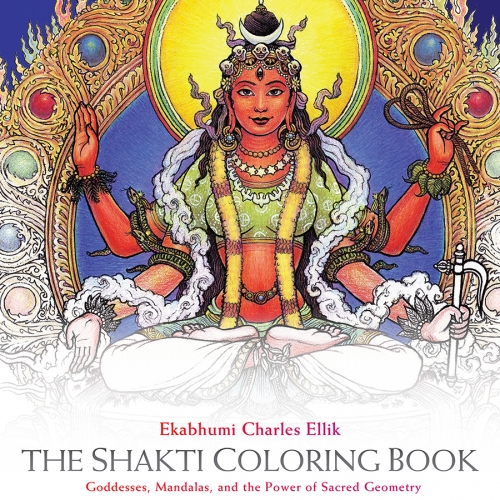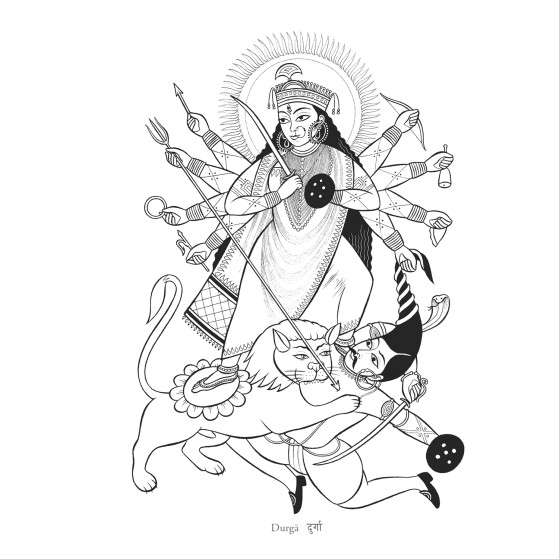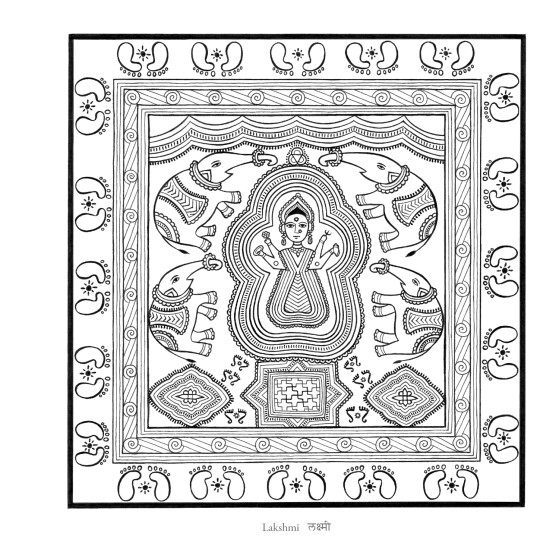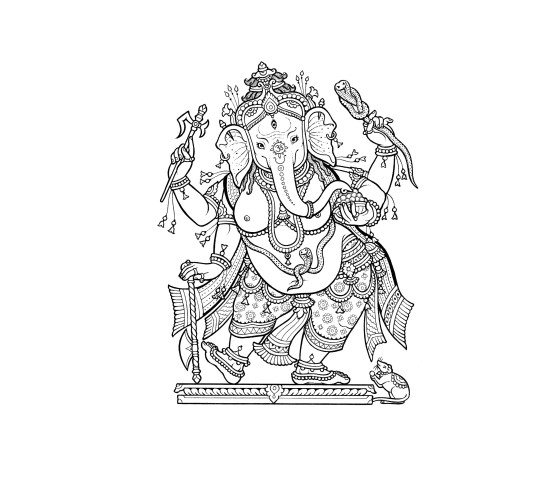Coloring Sacred Art As A Spiritual Practice. {book preview}

Years ago, while teaching youth yoga, I drew pictures of the monkey deity Hanuman in various Yoga postures for my young students. Coloring the pictures made study fun for the kids, and it helped them with memorization.
As my own studies progressed, deity practice became part of my daily routine. Illustrating deities evolved from an aspect of instruction to the hub of my spiritual life. I found that meditating on the deities and the rich symbolism of their depictions as I worked deepened my internal practice immeasurably.
Though my young students and I both enjoyed this creative activity, it did not occur to me to provide adult practitioners with images for coloring until I was asked. After seeing the illustrations of deities I’d done for books by scholars, readers wrote to me requesting copies of the artworks.

Many readers, especially Yoga students, also wanted to know more about these images, including the meaning of visual devices like multiple arms and the symbolism of geometric shapes. Most of all, they wanted to know about the practice of making sacred art.
While there are many books explaining Hindu iconography, and a few that cover painting, there are precious few books that actually explain how to make art as a yogic practice. So I typed up handouts to give to students; the information in these handouts was later refined by hands-on, practical experience. Collecting these images and lessons into a book was the logical next step.
In those years as an instructor, I taught in Yoga studios filled with beautiful but nonyogic art. Even in studios filled with Hindu imagery, people did not know what the images symbolized. This is problematic because mixing and matching artworks from different traditions with different methodologies can create confusion and subtle impediments to yogic spiritual practice.
Most Yoga students know that what we eat and how we eat it affects our health and spiritual development. What we put in our eyes is just as influential as what we put in our belly.
When our artworks are in alignment with our spiritual goals, they shape our values in a way that complements our spiritual practice. Mystic artworks give us accurate models for our meditations, acting as guides for our internal journey.

Like Hatha Yoga, the practice of making sacred art utilizes physical means to stabilize, support, and shape the spiritual aspirant’s internal experience. Many of the images are instructive in nature, so they also show auspicious new ways of being present in the world and help us expand our notion of Self.
It is not the activity alone that causes transformation, however, any more than stretching makes people enlightened. It is the awareness, attitude, intention, and energy we bring to the physical act that ensures personal growth.
When we are so overflowing with awe, love, and appreciation for being present that our sense of fullness overflows, we share with others. For creative types, this effulgence is expressed as sacred art.
Unlike meditation, which is primarily an internal experience, making sacred art results in functional objects. When made with precision, they become devices that aid others on their spiritual journey.
In this way, making art is transformed from a form of personal expression to a form of community service. The emphasis shifts from individual to collective, from separate to connected, and our inner experience of unity is manifested in daily life.
Creativity as a devotional practice transforms us into a vehicle for the Goddess’ blessing energy. Creativity is Shakti (The root, shak, means to be able, and the term Shakti describes divine creative power and the hypnotic beauty of appearances as well as the power to transform and destroy.)
The role of the devotional artist is choosing to become the path of least resistance for this divine creative flow.

Get your copy of the coloring book here.
Adapted from The Shakti Coloring Book: Goddesses, Mandalas, and the Power of Sacred Geometry by Ekabhumi Charles Ellik. Copyright © 2015 by Ekabhumi Charles Ellik. Published in July 2015 by Sounds True.
*****
Ekabhumi Charles Ellik is an artist, poet, and a student as well as a teacher of classical tantric hatha yoga. His diverse work includes 20 original illustrations created for Sally Kempton’s book Awakening Shakti (Sounds True, 2013). He lives in the San Francisco Bay area.

